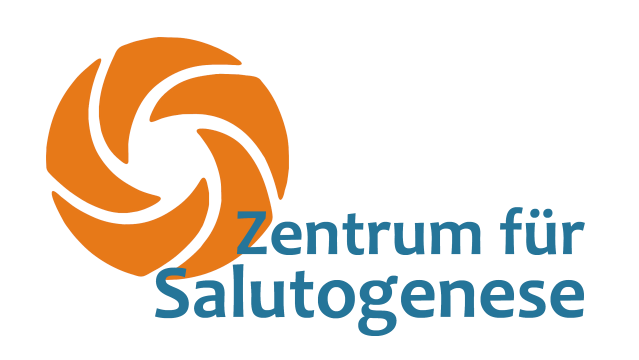9th Symposium on Salutogenesis in Heckenbeck/Bad Gandersheim
Available video recordings from May 1, 2015: GEN Germany – Network of Communities e.V.: M. Tacke and Th. Waldhubel: https://www.youtube.com/watch?v=090ZCoz2KqY Theodor Dierk Petzold: https://www.youtube.com/watch?v=xBzxhDRIUq8 Dr. Eckhard Schiffer: https://www.youtube.com/watch?v=fkUHZN_CJOc&feature=youtu.be ZEGG: B. Klein and G. Lohmann: https://www.youtube.com/watch?v=AbUJSmDdSwU Discussion Forum: https://www.youtube.com/watch?v=vyUvy54jaNA
Here is the link to the Heckenbeck film "Lust auf Dorf" (A Passion for Village Life), which was broadcast on ARD on March 4, 2016 and is available in the media library: Enjoy!
Community life and salutogenesis were the focus of the 9th Symposium for Salutogenesis, held from May 1st to 3rd, 2015, which the Salutogenesis Center organized in conjunction with the Weltbühne (World Stage) and the Freie Schule (Free School) in Heckenbeck. The small village near Bad Gandersheim serves as a prime example of a salutogenic alternative to societal isolation, explained the head of the Salutogenesis Center, physician Theodor Dierk Petzold, who initiated the community project some 30 years ago. The village, with its 480 inhabitants, now boasts a vibrant community life, a diverse infrastructure encompassing medicine, education, and culture, and is experiencing a steady influx of young families. In her welcoming address, Mayor Ricarda Polzin described Heckenbeck as "a beacon of hope."
Communities are indispensable for healthy development in light of the individualization and economization of all areas of life, emphasized physician Dr. Eckhard Schiffer. The lack of face-to-face interaction leads to loneliness and is a pathogenic factor. Direct exchange between people therefore forms the core of a salutogenic social community, the importance of which he elaborated using the concept of intermediary spaces: spaces between the inner and outer worlds that can only be experienced through direct encounters. Here, there is no pressure to achieve a result, no failure, and every individual is accepted as a human being.
Paths to salutogenic communities
The symposium's approximately 150 participants learned about various paths to salutogenic communities, such as ecovillages affiliated with the Global Ecovillage Network (GEN). Specific examples were presented from Lebensgarten Steyerberg eV in Lower Saxony, the Schloss Tempelhof eG community in Kreßberg, Württemberg, the ZEGG (Center for Experimental Social Design) in Bad Belzig, southwest of Berlin, and self-governing projects at Burg Lutter at the foot of the Harz Mountains and at Olgashof in Mecklenburg-Western Pomerania. Informal communities that prioritize communication and interaction were also recognized, such as the Feriendorf neighborhood initiative in Quakenbrück, Lower Saxony, which provided residents with the experience of being seen and supported. The Solidago health insurance program, in turn, combines solidarity in premium calculation and risk assessment, along with free choice of therapy, with regular personal meetings of the insured community in local groups.
Many projects were initiated by individuals or groups. "If the need for community cannot be satisfied within the prevailing culture, new communities are founded," says Petzold. However, they can only develop through self-organization around an attractive goal ('attractor'), such as the fundamental human need for belonging. Each member must be able to live in a way that is beneficial to others.
The initiatives presented are social communities in which people communicate directly in personal encounters (predominantly paraverbal), and at the same time cultural communities that also use explicit rules and conditions as well as mediated communication (such as emails) for functioning coexistence. However, these conditions are constantly reviewed and renegotiated: What is salutogenic for the individual? Which rules feel right within the community? This sense of rightness is also gained in resonance with a global dimension.
The symposium program offered numerous approaches to this dimension – including non-linguistic ones – most notably the framing circle dances led by Dr. Sabine Olbrich, as well as sound and healing word meditation, creative use of breath, mantra chanting, guided sound walks, and a "journey to the origin community of our soul." A workshop based on the "Earth Forum" offered an approach through "imagination, intuition, and inspiration." Other topics in this context included poems on psychosocial bonding, the role of storytelling in social cohesion, and humor, which found its place in laughter yoga and the community evening moderated by actress and cabaret artist Elisabeth Möller. After the sessions, participants repeatedly gathered in clans – small groups where they could reconnect with, reflect on, and process their experiences.
Effects of community life
What are the effects of salutogenic communities? Practicing a balance between "I" and "we" was one of the most frequently mentioned topics. A greater awareness of generations was consistently reported. Aging and death are being more strongly integrated into daily life. Speakers repeatedly emphasized the experience of shaping the world together, both internally and externally, and bringing something new and meaningful into the world, which was seen as a counterweight to the powerlessness-inducing structures of an individualistic society. Existing institutions can also be changed, for example, through balance-oriented leadership cultures, which Dr. Ellis Huber, Prof. Dr. Bernd Fittkau, and Dorothée Remmler-Bellen developed with the participants. The symposium also shed light on conflicts and dangers within communities, such as the tendency toward overexertion leading to burnout. Communities can even have a pathogenic effect if polarization prevails instead of balance, if they serve an imposed morality or ideology, and if they disregard individual autonomy and self-regulation.
On the third day, religious scholar Florian Jeserich, using the twelve monastic rules of Benedict of Nursia from the early 6th century, addressed the question of whether a healthy community needs spiritual rules. He clearly identified the salutogenic and pathogenic aspects of these rules.
In a fishbowl forum at the end of the symposium, participants discussed their experiences at clan meetings and drew a conclusion: “Clans are a communal experience – that’s different from theory, it’s a different level. How can we cultivate this communal experience? Perhaps by creating many spaces for exchange in small groups.” [Rolf Bastian]




